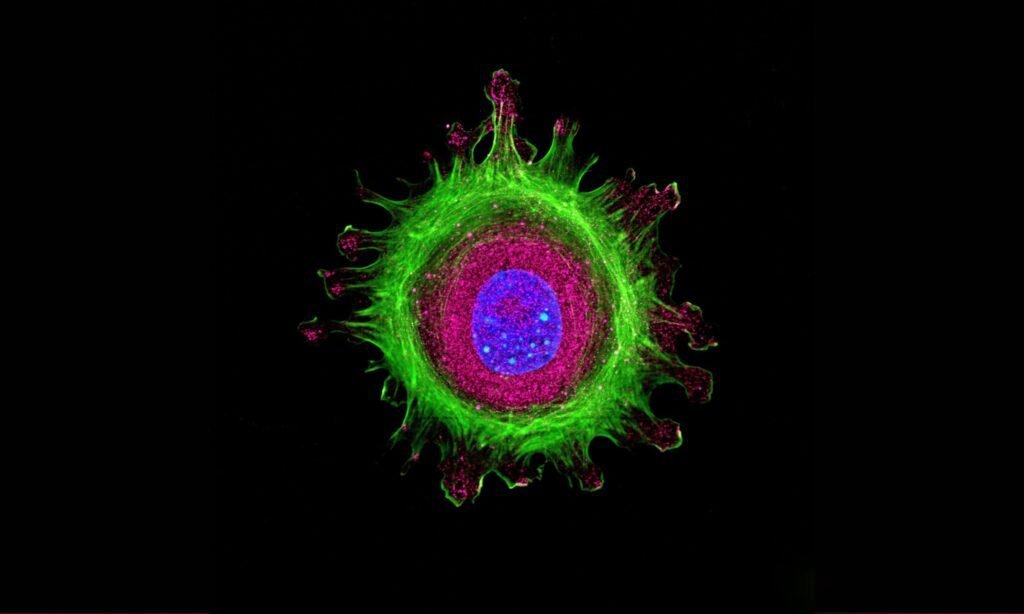Unlocking the Mystery of Senescent Cells: A Revolutionary New Method for Detection
As the human body ages, it does so at a cellular level, with each cell experiencing its own aging process. While most cells continue to function normally, a small percentage enter a state known as cellular senescence. This dormant state has been linked to various health concerns, including arthritis, diabetes, and cognitive decline like memory loss. Recent research led by scientists at Tokyo Metropolitan University is shedding light on how to effectively detect these problematic senescent cells without invasive techniques.
The Dangers of Senescent Cells
Senescent cells cease to divide but refuse to die off. Instead, they release proteins that contribute to chronic inflammation, adversely affecting bodily functions. According to a pivotal study published in Nature in 2011, removing these "zombie" cells from mice delayed several age-related conditions and improved physical capabilities.
Key Insights:
- Chronic Inflammation: Senescent cells can lead to issues such as clogged arteries and brittle joints.
- Drug Development: Researchers are exploring senolytic compounds like dasatinib and quercetin, aimed at clearing these harmful cells.
- Clinical Trials: Over a dozen trials are currently assessing the effectiveness and safety of these senolytic drugs.
Before any potential treatment can reach the market, scientists must establish the baseline number of senescent cells in tissues and ensure that this figure decreases during treatment.
A Game-Changing Detection Method: Frequency-Modulated Dielectrophoresis (FM-DEP)
The conventional methods for identifying senescent cells often rely on fluorescent tags, which can be time-consuming and may compromise the integrity of the cells. The new detection approach led by Assistant Professor Ippei Yagi leverages frequency-modulated dielectrophoresis (FM-DEP).
How FM-DEP Works:
- Electric Fields: A non-uniform alternating electric field is applied to a cell, resulting in a reorganization of its internal charges.
- Unique Response: Each cell type exhibits a distinct response curve based on its electrical properties.
- Rapid Results: In comparison to traditional methods, Yagi’s team found that FM-DEP can identify senescent cells in mere seconds without needing dyes or antibodies.
Research Findings:
- Young fibroblasts reversed their course around 2.8 MHz in the experiment, while their senescent counterparts altered their trajectory at approximately 1.9 MHz.
- The 30% difference in frequency allows for straightforward identification of cell populations.
- This label-free technique can potentially improve the efficiency of both laboratory research and clinical applications.
Aging and Its Impact on Cell Structures
The FM-DEP method reveals that aging modifies lipid compositions in cell membranes. As fibroblasts age, their membranes contain less unsaturated fat and more cholesterol, leading to a thicker bilayer that affects electrical charge distribution.
Key Changes Observed:
- Oxidized Lipids: They contribute to stiffened cell surfaces in senescent cells.
- Size Perception: Aging alters how cells interact with electric fields, causing them to seem larger electrically, even if their physical dimensions remain unchanged.
Broader Implications:
FM-DEP has previously been applied to sort various cell types like stem cells and infected red blood cells. Advances in microfluidics highlight the potential for real-world applications, such as efficiently isolating senescent cells from stem-cell grafts.
Future Possibilities in Medicine
The FM-DEP technique holds promise beyond detecting senescent cells:
- Drug Screening: This technology can facilitate high-throughput screening of senolytic drugs by measuring senescent cell populations pre- and post-treatment.
- Biological Age Assessment: It could also help determine the “biological age” of tissues by observing changes in membrane profiles due to external factors like diet and UV exposure.
- Regenerative Medicine: By identifying and removing senescent cells from transplanted stem cells, the efficacy of therapies for wound healing could be significantly improved.
Next Steps in Research
For FM-DEP to gain widespread acceptance, additional studies are required to:
- Expand Testing: Researchers will explore cutoff frequencies for various cell types, including muscle, fat, and nervous tissues.
- Cross-validation: Traditional markers of senescence need to be correlated with FM-DEP findings to ensure reliability.
- Monitoring Treatment Effects: Investigating whether drugs that rejuvenate mitochondrial functions can shift cutoff frequencies back towards youthful states.
- Safety Assessments: Comprehensive studies are necessary to ensure high-frequency fields are safe for live cells.
The study has been published in the IEEE Sensors Journal, marking a significant advancement in understanding and potentially mitigating the impact of aging at the cellular level.
For more information on the implications of senescent cells and the future of regenerative medicine, consider exploring resources on chronic inflammation and cellular aging.


